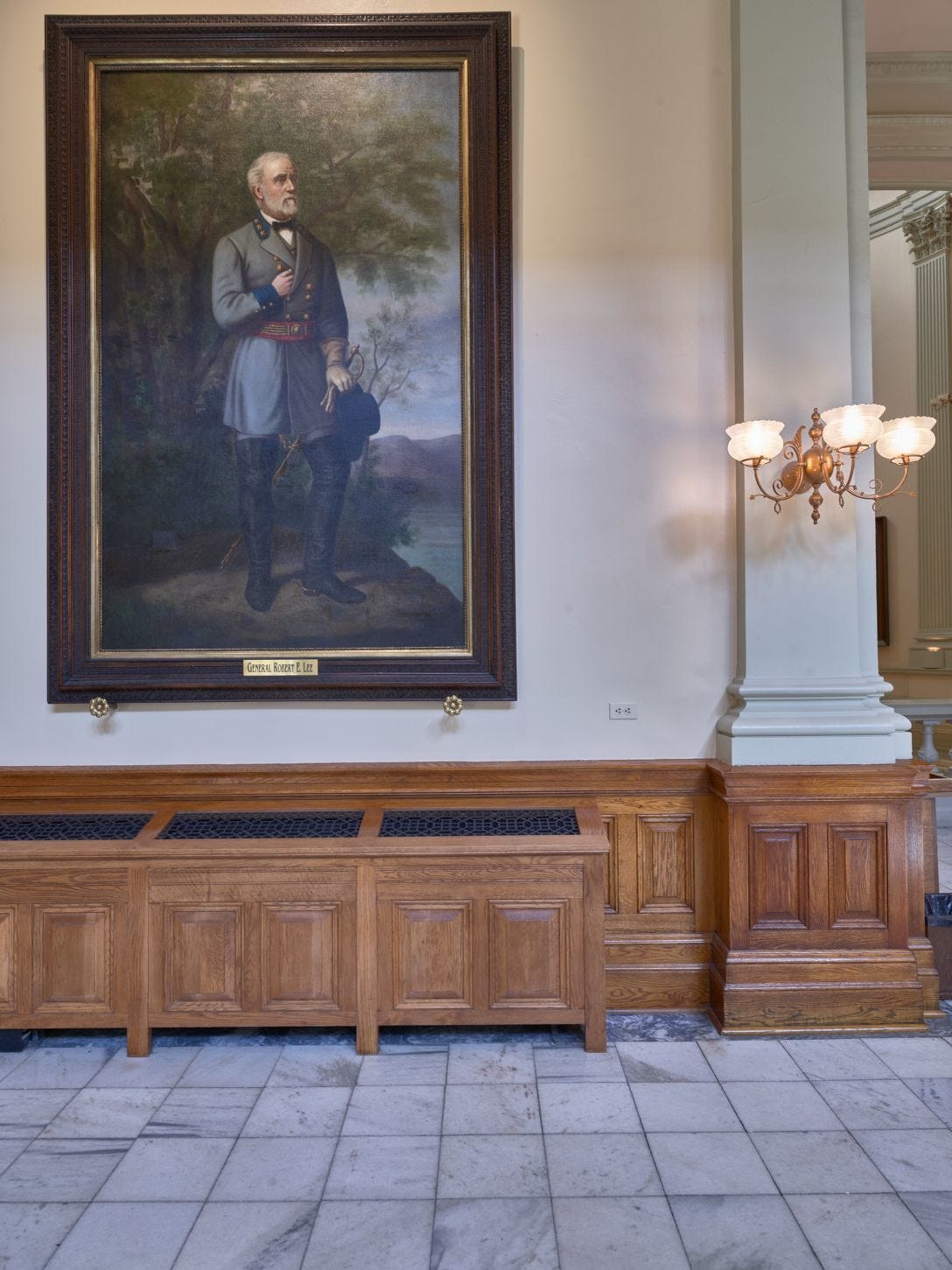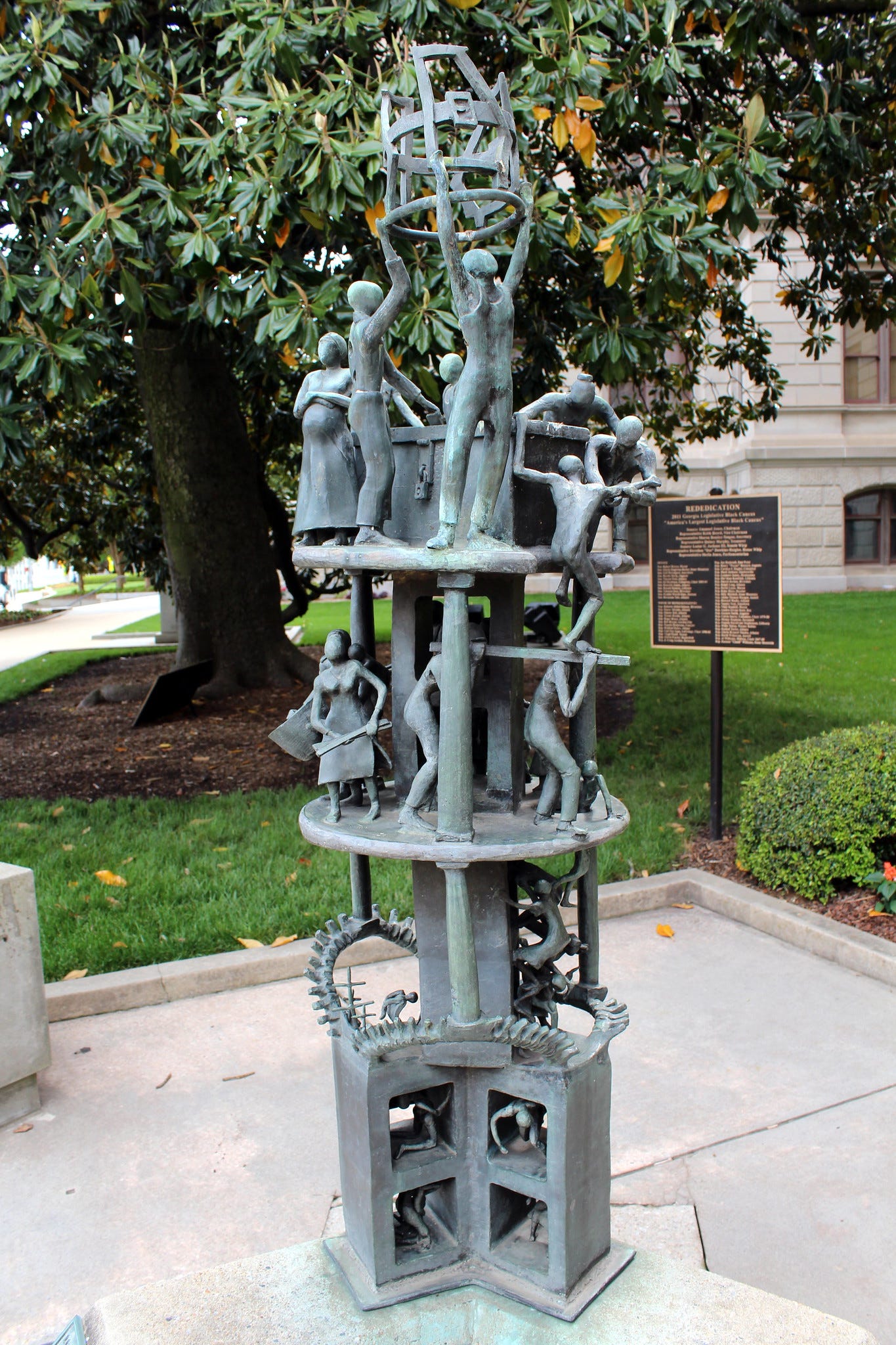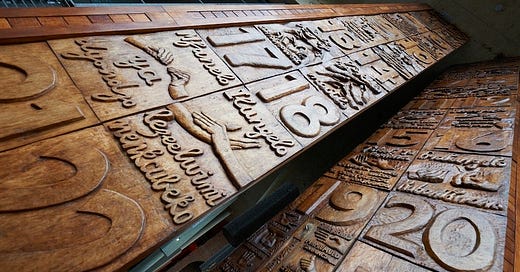Mixing Pain and Promise at Johannesburg’s Constitution Hill
What a visit to the South African landmark taught me about how our public spaces can memorialize the past
In 1893, Paul Kruger was concerned. Gold-seeking foreigners were flocking to the mining town of Johannesburg, founded seven years earlier when white settlers found gold nearby. In addition to bringing crime like any gold rush, the influx of miners and laborers threatened Dutch Afrikaner control of the region. As president of the South African Republic, Kruger needed to maintain control. He staked out a hill to build a prison that would serve two goals—a place to keep unruly foreigners and a perch where he could keep an eye on the rapidly-growing city.
At the time, Kruger didn't know that this prison, later called the “Old Fort,” would become an epicenter of racial injustice for the next century before transitioning to become an epicenter of racial justice in modern-day South Africa. And in doing so, it provides an important lesson on how public spaces can remind us of past injustices while pointing to a better future.
The morning after a 16-hour Atlanta-to-Johannesburg flight last July, my college roommate Jason and I set out on an all-day tour of South Africa’s largest city. We asked our guide, Thabang, to show us an authentic snapshot of Johannesburg that mixed the pain and progress of its history. It didn’t take long.
En route to our first stop, we drove through the wealthy financial district of Sandton and past the picturesque St. John’s College, an elite Anglican boarding school founded in Johannesburg’s early days. Moments later, we entered Hillbrow, a neighborhood known for dense poverty, crime, and, more recently, an influx of migrants from across Africa. We drove up a slight hill and turned left into a security gate below a grassy, mounded wall topped with wire fencing. Two guards checked Thabang’s tourism credentials and opened the gate to our first stop, Constitution Hill.
Thabang parked in a near-empty lot overlooking the city. We stepped out of his four-door sedan and stretched in the cool morning sun, still adjusting to the six-hour time change and the jolt from summer to winter. Thabang led us into a worn, one-story brick building where he paid our entrance fee and handed us off to our museum guide, Ntsika. Jason and I knew little about where we were. The next hour would awaken us to the horrors of South African apartheid, but it would also demonstrate how leaders can transform such a place into a catalyst for healing.
We were in Paul Kruger’s “Old Fort.”
Three years after the prison’s completion, Kruger converted it into a fort to protect against British invasion in the Anglo-Boer War. Vastly outnumbered, the Dutch soon surrendered the fort and surrounding territory, becoming part of the British empire.
The British reverted it back into a prison for white Afrikaners. In 1902, they added a separate prison, Number Four, further down the hill to house “native” male prisoners. Over the next eight decades, Number Four held thousands of black, Indian, and multi-racial prisoners, including multiple stints by Mahatma Gandhi and Nelson Mandela.
In 1909, the British Parliament created the Union of South Africa as a partially self-governing state that granted equal rights to British and Dutch Afrikaners under one flag. But, it denied those rights to black Africans and other non-white people, which collectively represented 80% of the population.
Afraid of what might happen if they lost political control to the non-white majority, political leaders instituted an escalating range of laws—later known as the system of apartheid—that stripped many black South Africans of their land, denied their political rights, and dictated where they were allowed to go. For example, the government required black South Africans to carry a government-issued passbook that denoted where they lived, worked, and were allowed to travel. Those caught traveling outside designated areas or forgetting to carry the book were arrested and jailed. Between 1916 and 1984, authorities detained or prosecuted more than 17 million Africans for pass law violations. Passbooks provided the primary means for the white minority to maintain control.
When Nelson Mandela and the African National Congress led mass protest campaigns against apartheid in the 1950s, they traveled to a prohibited township or refused to carry passbooks altogether. Many in Johannesburg landed in the Number Four prison. While it also held traditional criminals, 80% of prisoners were arrested for breaking apartheid laws or as political opponents of the government.
Our guide, Ntsika, was about to lead us through Number Four.
We stopped first in one of Number Four’s sleeping quarters, a concrete slab space the size of a high school classroom where up to 60 prisoners slept. All but prison gang leaders slept in rows alternating head to foot for warmth. Rape, especially against new and young prisoners, was rampant.

Outside the sleeping quarters, a row of open-air toilets stands above a slight decline down to the courtyard where prisoners sat to eat their often-spoiled, meager food. When toilets overflowed, the sewage flowed down through the eating area. After each day of offsite hard labor, guards would force prisoners to strip naked in the courtyard and do the “tausa,” a humiliating dance that involved jumping, spinning, and clapping in the air to ensure they hadn’t hidden contraband in their anuses.
It’s hard to imagine enduring this torture for any reason, much less as punishment for forgetting to carry a passbook on a trip to the grocery store.


Below the courtyard, we passed through a narrow passageway and down a ramp to a row of solitary confinement cells. Ntsika explained that prison guards would send men to solitary confinement for breaking prison rules or sometimes at random to stoke fear. While there, prisoners spent 23 hours a day in the cell with only two buckets—one for water and one to serve as a toilet. Their only food was water drained from cooking rice. Even though South African law limited solitary confinement to 30 days, many stayed longer and even died.

By that point, it became clear that Number Four was more than a holding cell for apartheid violators. It was a place to dehumanize and sometimes exterminate thousands of men who protested white South African rule.
The South African government held prisoners in Number Four until 1983—nearly four decades after German concentration camps ceased operating. And it wasn’t until the early 1990s, under significant international pressure, that the government repealed apartheid laws, released political prisoners, and ultimately held its first election involving all South Africans, ushering Nelson Mandela to the presidency in 1994.
I felt heavy with lament. I wanted to sit down. But Ntsika wasn’t finished. He explained that we would spend the last 15 minutes touring the Constitutional Court. I assumed he meant another historic building part of the original prison complex. I was wrong. Instead, we exited Number Four back to the Old Fort’s square where we had parked. We turned left and walked 20 yards toward a modern concrete building I hadn’t noticed when we arrived.
We paused as Ntsika pointed to 11 lines of weather-worn, multi-colored text on the side of the building. He explained that they say “Constitutional Court” in the 11 official languages of present-day South Africa. During apartheid, only English and Afrikaans were the official languages, despite being the native languages of only a fifth of the population.

To the right, we walked through two 30-foot-high, dark wooden doors engraved with symbols signifying the 27 fundamental human rights enshrined in the nation’s 1996 Bill of Rights.

Opened in 2004, the Constitutional Court sits on top of another former prison wing. Inside the chambers, the walls are built with faded red bricks preserved from the demolished prison wing, a reminder of what used to stand in its place.

Ntsika pointed to a narrow, eye-level window that stretched the length of the courtroom as a group of people walked past it outside. Since the room sits a few feet underground, we could only see their feet. He asked, “Can you tell their skin color based upon what you see? No. This is to remind everyone in the court that its role is to protect people of all races under the law.”
Moments later, we exited the court. Facing the entrance, a cauldron with a flame burned inside an old prison staircase in the parking lot. Constructed in 2011, the Flame of Democracy burns to “remind South Africa’s citizens of their right to a life free from oppression and injustice.”
As we rejoined Thabang, I felt a range of emotions. Grief from the horrors of the Number Four prison. Awe at the architectural genius of building the nation’s foremost justice building on the site where thousands experienced gross injustice. But I also felt curious. I wondered, what would an equivalent place look like in the South?
As I reflected on this question, my mind jumped back to when I chaperoned my son’s third-grade field trip to the Georgia State Capitol last spring. Midway through the tour, our guide stopped in the hallway between the Senate and House chambers to explain how bills become laws. Behind her, a life-size portrait of General Robert E. Lee in his Confederate uniform stared down at us.

I had walked past that portrait many times during my five years working in state government. It made me uncomfortable at the time, but it was a detached discomfort that didn't stir my soul. As I watched Hudson’s class—half of whom were non-white—internalize their civics lesson in front of a man who led the army devoted to subverting our nation and preserving slavery, the blatant contradiction sunk in. Despite our progress since the Civil War and the civil rights movement, we still bestow Robert E. Lee and other Confederate leaders with places of honor between the chambers where legislators make laws and down the hall from where the governor implements those laws. The state capitol isn’t just a museum—it’s the center of two-thirds of our state government.
Now in fairness, the Georgia legislature has added portraits of several black leaders, including a 1974 portrait of Dr. Martin Luther King Jr. in the northeast corner (although Confederate leader Benjamin Harvey Hill’s 1886 statue stares down at the painting with his left hand on his hip as if in dismay). On the grounds outside that same corner sits a 2017 Dr. King statue, along with the Expelled Because of Color statue, installed in 1977 to commemorate the 33 black legislators expelled from the legislature three years after the Civil War ended.

These markers are important, but statues of white supremacists and Confederate leaders far outnumber these additions and hold the most prominent positions. Simply adding to the collection will never balance the picture. If the state capitol is Georgia’s home, we’ve left our grandparents’ paintings of white supremacists above the living room mantle and dining room table, while we’ve added paintings of black leaders in the corner bedroom.
That realization bothered me during the field trip, but it took a visit to Johannesburg's Constitution Hill for me to see an alternative that reminds visitors of past injustices while pointing to a preferred future of freedom and democracy. What would it look like for our state capitol to memorialize the dark chapters of its past rather than lionize the men who played leading roles in those chapters? Could we create a place that laments past injustices, acknowledges progress, and builds hope for a better future?
Georgia is ten years shy of its 300th anniversary. Just imagine the many Georgians with legacies worth elevating who we’ve relegated to the shadows because we’re content spotlighting men whose primary legacy is defending white supremacy. Let’s tell a more complete—and a more hopeful—story.
Thank you for reading Southbound. I’d love to hear from you. Please post your reflections below or send me a message. If you think others would benefit from reading this article, please forward it or share it on social media. Personal recommendations are the most common way others learn about Southbound.
And, if you’re ever in Johannesburg, look up Thabang for a tour with his company, Tsalanang Travel & Tours.



